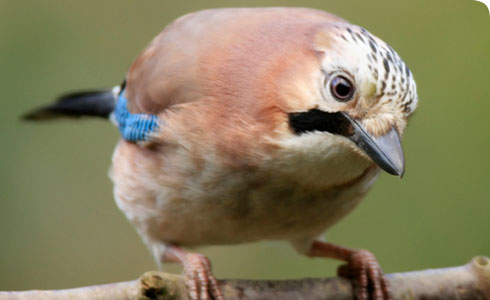Garrulus glandarius
The jay is one of the most colourful members of the crow-family (Corvidae).
Besides their colour their habits and intelligence are very crow-like. Linnaeus already knew that and that’s why he called the jay Corvus glandarius (Corvus is Latin for raven). The Latin word glandarius (from glandis = acorn) refers to the acorn eating and acorn collecting and hiding habits of the jay. Especially this hiding habit shows the jay’s intelligence.
Later, the genus name Corvus was changed in Garrulus to distinguish the jay from the all-black ‘true crows’ of the genus Corvus. Its name garrulus is based on its sound and means babbling or chattering. But the jay is still a member of the resourceful crow-family and therefore a very adaptable and successful species.
Species detail
The jay is well known and needs hardly any detailed description.
- The overall body colour is pinkish-brown.
- The face is more greyish white, bordered on either side by a broad black malar stripe.
- The nasal plumes are less bristly in character than the nasal plumes of most other corvids.
- The feathers of the top of the head are greyish white as well, with dark centres forming conspicuous streaks. When the bird is excited these feathers will be raised and forms a remarkable crest. The flight feathers are black and white. The most distinguishing mark however is the blue-an-black barred feathers on the wings. The barring of these feathers, in fact the alula and the primary coverts, consists of a black bar which shades through dark and light blue to bluish white or snow white, sharply demarcated from the posterior edge of the next black bar. Often there is a trace of blue barring on the white parts of the primaries as well.
- The tail is black with the two central feathers and the outer webs of the others more or less barred at the base with dull silvery blue.
- The eyes are bluish grey and the bill is black or very dark horn coloured.
- The Jay’s legs and feet are pale fleshy brown.
This description covers the forms in Europe and the British isles. However, the jay has lot of geographical subspecies which all differs in colour. Main differences are found in the colour and the pattern of the head.
Genetically colour aberrations in the Jay are recorded of which leucistic, diluted and brown are the most common mutations.
-

Taxonomy
Learn about the characteristics and appearance of the three typical jays that fall within the genus Garrulus as well as the 'micro-races' within these groups.
-

Distribution and habitat
Discover the areas of the world that Garrulus glandarius is known from and the types of habitat it is typically found in.
-

Feeding and general habits
Read a detailed description of the the habits of jays, including their collecting, eating and storing of food as well as the types of food they seeks and behaviour exhibited when attacked by other species.
-

Nesting and social behaviour
Find out where jays nest and learn about the the reproductive patterns of jays as well as their interaction at the different stages of their lifecycle.
-

References
Get reference material for Garrulus glandarius (Eurasian jay).
Images
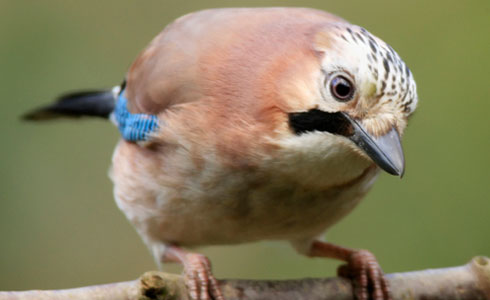
Garrulus glandarius (Eurasian jay) is a member of the resourceful crow-family and therefore a very adaptable and successful species.
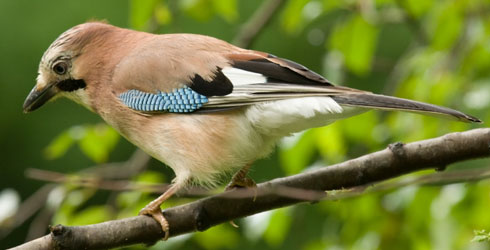
Eurasian jays are characterized by blue-and-black barred feathers on the wings and/or tail.
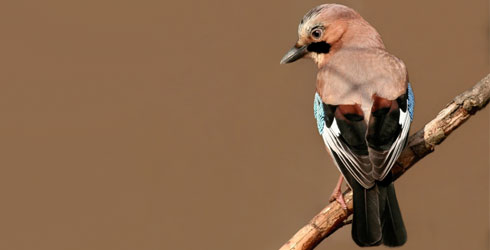
The range of the Eurasian jay usually coincides with that of oaks.
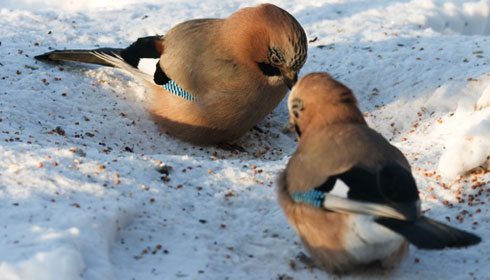
When seeking food the jay will dig in the likes of dead leaves or loose soil with side-to-side swings of head and bill.
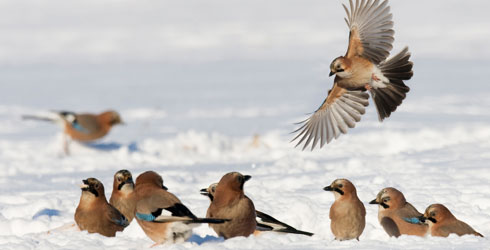
The typical ‘play’ or ‘frolicking’ of the jay consists of dashing from bough to bough within a rather small area, ducking, dodging and sometimes uttering low intensity variants of the grating call.

Eurasian jay with diluted plumage colour. Specimen Natural History Museum Naturalis, Leiden (Photo by Hein van Grouw).
